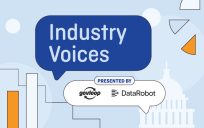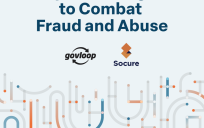AI-powered automation is transforming various aspects of government operations, IT, and application delivery. Government agencies are using AI-powered automation to help with mission delivery, to build resilience, to upskill employees, and enhance trust in government.
Agencies are implementing AI-powered automation to expedite and improve the quality of reports on budgets and expenditures, citizen requests, grant management, and other government operations while reducing errors and costs.
Therefore, it is up to the government’s IT and application teams to ensure their systems are secure, robust, and scalable so they can serve the many internal and external stakeholders of government bodies without sacrificing quality or adding to employee workloads.
The good news is that every government department can effectively implement a secure AI-powered automation platform. There are many functions in which AI-powered automation can improve government operations: finance and accounting; procurement; human resources; supply chain; contact centers; and IT services.
AI technology strengthens defense operations and automated decision-making
AI-powered automation can be used in intelligence and defense operations to keep track of records, manage digital identities, and monitor national security. These applications require working with large amounts of data to make accurate decisions. For example, the Naval Supply Systems Command (NSSC) deployed AI-powered automation to boost the efficiency and responsiveness of its IT services. By eliminating 21,000 hours of labor, the agency has freed up its workforce to perform more value-added work. Simultaneously, NSSC has combined these emerging technologies to evaluate a backlog of over 56,000 hours of programs that, when automated, will expedite this work.
AI-powered automation will help government agencies meet IT modernization mandates
The Office of Management and Budget (OMB) released new guidance in September that directs federal agencies to design and deliver a “digital-first public experience” through improved websites and digital services as they continue to implement the 21st Century Integrated Digital Experience (IDEA) Act. The 10-year digital transformation framework includes a variety of actions and standards to help agencies design, develop, and deliver modern websites and digital services.
In the future, government agencies must implement solutions that entirely automate the government enterprise and work at the intersection of people, processes, data, and systems.
According to a new IDC white paper, “Agencies should use an automation platform to efficiently deliver AI into operations, decisions, and processes throughout the organization. AI can discover automation opportunities in existing agency workflows, processes, and applications and prioritize tasks. AI enables agencies to automate cognitive processes like analyzing documents, carrying on conversations, or leveraging automation to apply machine learning models to large data flows.”
An automated platform with AI capabilities that discovers, automates, and operates end-to-end processes can give government agencies more value. The solution should be built on an open platform that lets government employees develop new ways to do things while getting results and outcomes for their departments. A low-code platform with AI that supports low-code application development, intelligent document processing, process mining, API integration, natural language processing, and API integration can link users to digital tools and systems. This streamlines work and automates time-consuming tasks.
Upskill and empower government workers and increase productivity
An automation platform should allow government workers to become citizen developers — empowering them to create automations even without coding expertise or technical capabilities. Workers can quickly make apps by dragging and dropping controls in a web browser. This feature gives employees a tool that integrates with existing applications and data that are hard to program, like legacy applications without an API, virtual desktop infrastructure (VDI) environments, or data that is mixed with web experiences.
Additionally, agencies can access platforms offering AI companions, an AI-enabled digital assistant that securely blends the best of GenAI and Specialized AI to work with a wide variety of systems and documents. Rather than simply help brainstorm or provide answers to questions like some GenAI solutions, these AI assistants help eliminate tedious everyday tasks by automating processes like submitting an expense report, processing invoices, planning a business trip, or moving information from one form to another seamlessly. By eliminating the need for IT involvement in such a way, IT personnel get more time back to work on high-value projects.
AI-powered automation streamlines government IT operations
Teams in charge of government IT operations have struggled to keep up with the rapid pace of change due to rising pressure to boost productivity, reduce expenses, and contribute to overarching agency strategies.
However, many of these challenges can be solved by offloading the mundane, time-consuming tasks that comprise the bulk of daily IT work to an AI-powered automation platform.
For instance, with the help of an AI-powered automation platform, government agencies can streamline and automate IT service-related tasks like software deployment, IT ticket resolution, application testing, cloud and infrastructure management, and IT asset management. As a result, IT departments are in a stronger position to provide strategic support to their respective agencies and make other valuable contributions.
AI-powered automation can enhance IT and application delivery in the government sector
Government IT and application delivery stand to benefit significantly from AI-powered automation. With AI-powered automation, government agencies and the military can become more effective, save taxpayer dollars, provide citizen services, meet government mandates, and make more informed decisions.
Ultimately, all these automations in the public sector can help them achieve mission objectives and empower front-line employees to make data-driven decisions quickly.
Todd Schroeder is vice president of public sector at UiPath. An industry professional with 15 years of hands-on experience in public sector technology and leadership, Schroeder has extensive expertise in technology change management, enterprise data management solutions, business intelligence, and big data programs.





Leave a Reply
You must be logged in to post a comment.